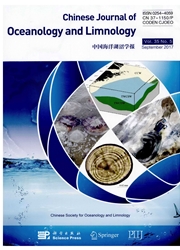

 中文摘要:
中文摘要:
phosphatidylinositol 3-kinase (PI3K )-AKT 小径涉及各种各样的细胞的功能,包括骑车的 anti-apoptosis,蛋白质合成,葡萄糖新陈代谢和房间。然而,在甲壳纲的动物的 PI3K-AKT 小径的角色仍然保持不清楚。在现在的学习,我们从 Litopenaeus vannamei 克隆并且描绘 AKT 基因 lvakt。511 残余 LVAKT 高度被保存;包含了一个 PH 领域,一个催化领域和一个恐水病的领域;并且高度在 L 的心和鳃被表示。vannamei。我们发现用实时量的 PCR (Q-PCR ) 分析,那 lvakt 在早白色期间是起来调整的点症候群病毒(WSSV ) 感染。而且, PI3K 特定的禁止者, LY294002,减少的病毒的基因抄写,暗示 PI3K-AKT 小径可能被 WSSV 劫持。我们的结果因此建议 LVAKT 可以对 WSSV 在虾免疫者反应起一个重要作用。
 英文摘要:
英文摘要:
The phosphatidylinositol 3-kinase (PI3K)-AKT pathway is involved in various cellular functions, including anti-apoptosis, protein synthesis, glucose metabolism and cell cycling. However, the role of the PI3K-AKT pathway in crustaceans remains unclear. In the present study, we cloned and characterized the AKT gene lvakt from Litopenaeus vannamei. The 511-residue LVAKT was highly conserved; contained a PH domain, a catalytic domain and a hydrophobic domain; and was highly expressed in the heart and gills of L. vannamei. We found, using Real-Time Quantitative PCR (Q-PCR) analysis, that lvakt was up- regulated during early white spot syndrome virus (WSSV) infection. Moreover, the PI3K-specific inhibitor, LY294002, reduced viral gene transcription, implying that the PI3K-AKT pathway might be hijacked by WSSV. Our results therefore suggest that LVAKT may play an important role in the shrimp immune response against WSSV.
 同期刊论文项目
同期刊论文项目
 同项目期刊论文
同项目期刊论文
 Molecular cloning and characterization of a threonine/serine protein kinase lvakt from Litopenaeus v
Molecular cloning and characterization of a threonine/serine protein kinase lvakt from Litopenaeus v 期刊信息
期刊信息
